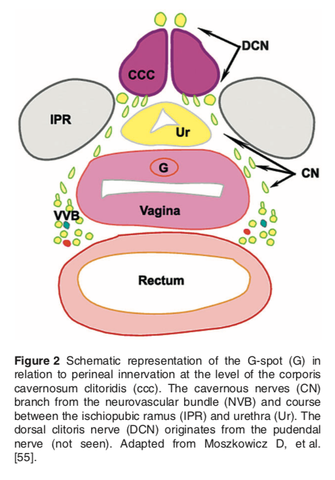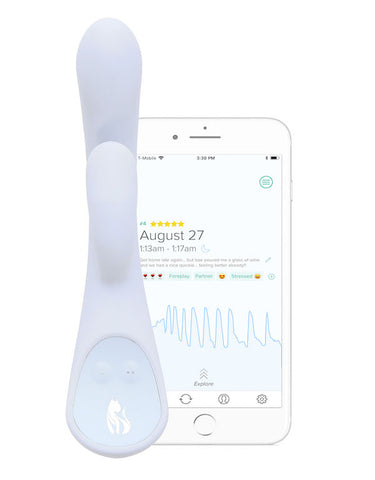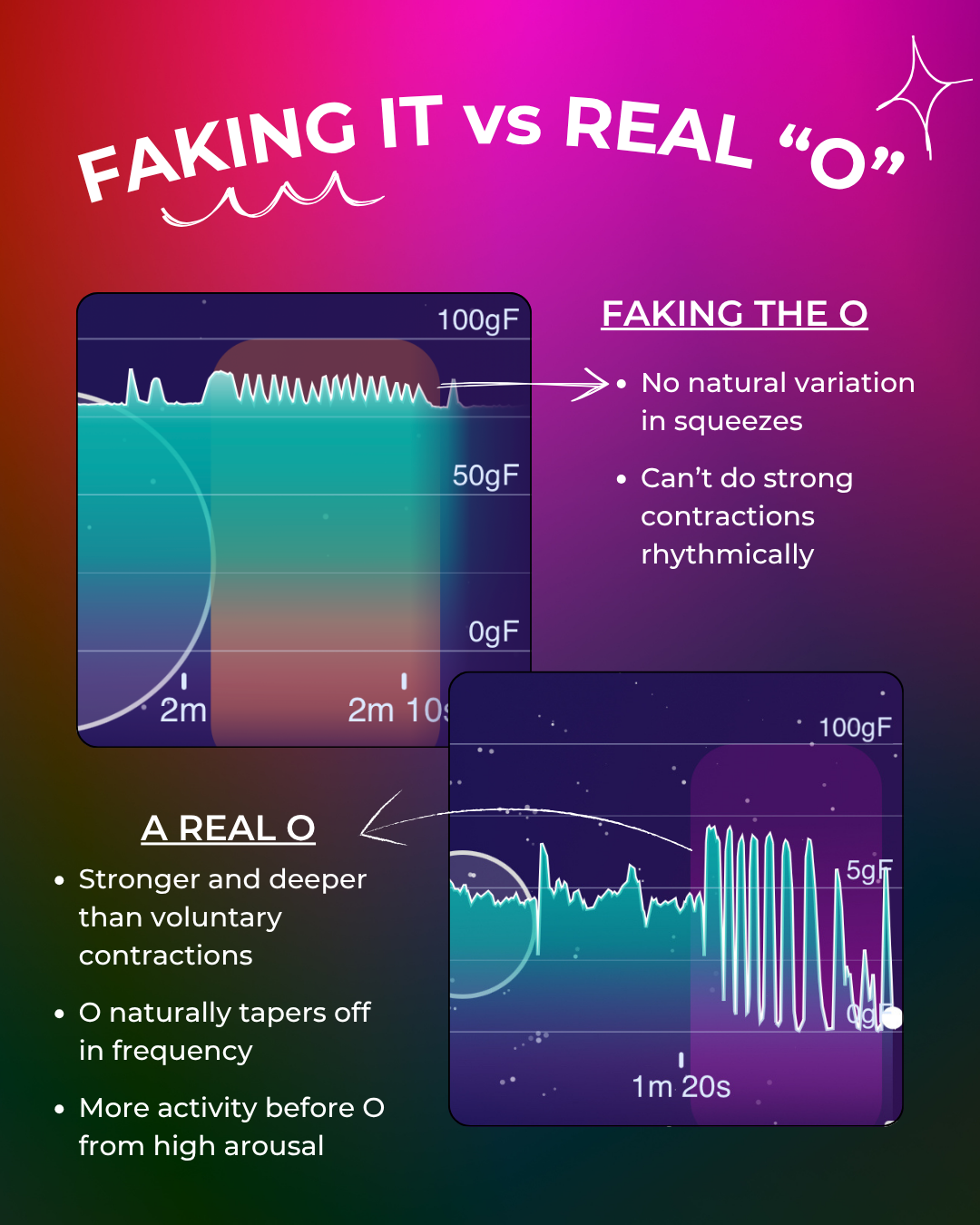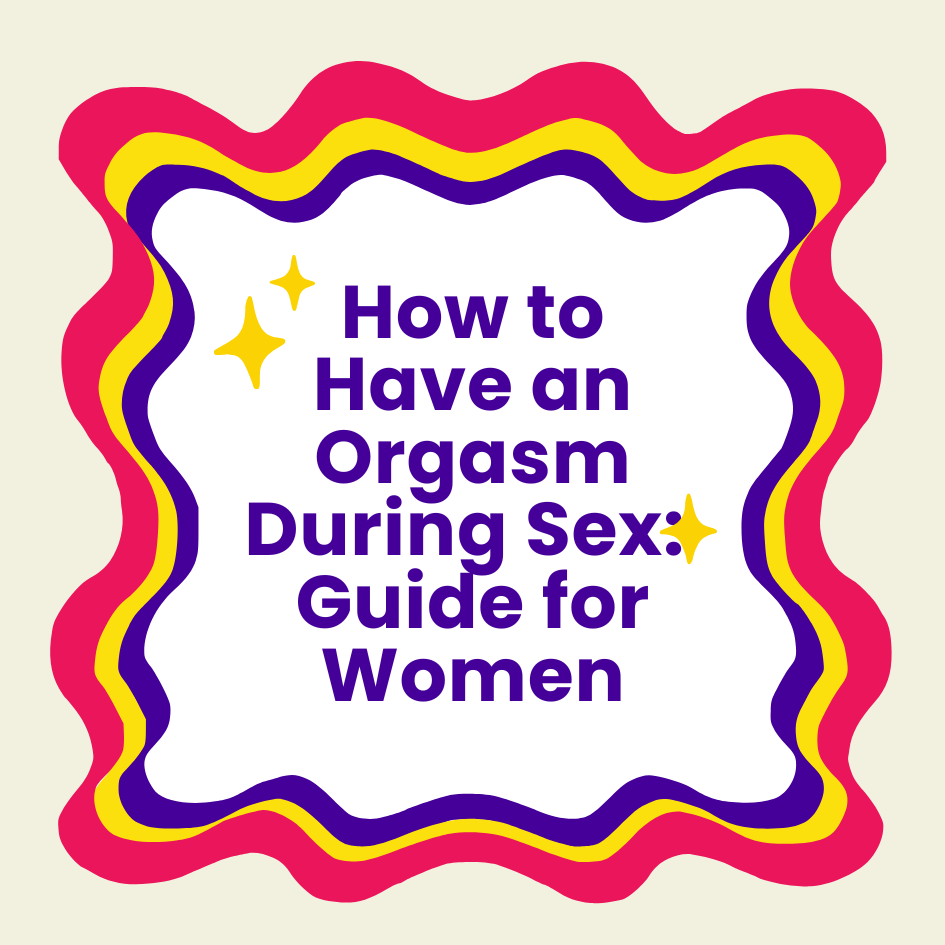
Original image from Find The Clitoris by Lioness Co-founder Liz
By Liz Klinger and James Wang, Co-founders of Lioness
This is one of the questions I get the most. It's also the question I least wanted to write about. Why? Well, the topic is burdened by the weight of history, both sociological / moral in nature and from conflicting terminology over time. It's hard to do a truly neutral, medical analysis of the topic.
If you want the short answer, it's complicated... but a lot of it is artificial distinctions created by inadequate or wrongheaded understanding of clitoral, vaginal, and broader female sexual anatomy. It varies a lot by person, and these two "categories" are often pretty bad at really capturing what's going on.
Of course, I expect that doesn't satisfy everyone who is specifically asking: "Can I have vaginal or clitoral orgasms? Are vaginal orgasms more intense? Is having 'orgasms of the vagina' or 'orgasms of the clitoris' better?"—and so on.
Well, if you want to know the messy history and complicated scientific landscape of the topic, read on.
What Does Clitoral vs. Vaginal Orgasm Even Mean?
Nowadays, there's no real controversy around the idea that the clitoris is an important female erogenous zone. But, while it anatomically has fewer nerves, the vagina is also an erogenous zone in and of itself. [3]On its face, that should mean that it's easy to distinguish. After all, orgasm from stimulating the clitoris = clitoral orgasms. Orgasm from stimulating the vagina = vaginal orgasm. Right?
The Clitoris Is Bigger Than You Think
The first complication is the clitoris is way bigger than most people think. While we typically have anatomy textbooks point at some tiny dot on the vulva, it's in reality far larger with its structure deeply embedded in the vagina.

Another useful excerpt fromFind The Clitoris
So, what many people identify as vaginal orgasms are actually clitoral orgasms, from the deeper structure. With knowledge of this anatomy, the famous (from Showtime's Original Series) sex researchers from the 1960s, Masters and Johnson, believed that all orgasms were ultimately clitoral. [2]
So It's All Clitoral? AKA The G-Spot Rears its Head
Well, not quite. As I mentioned before, the vagina itself possesses erogenous zones. [3] Sometimes, these are identified as the semi-legendary "g-spot" (see my other article on the g-spot). However, g-spot or not, it's not hard to believe that stimulation of some part of the vagina can lead to orgasm, whether it's connected to its own nerves, the urethra, the g-spot, Skein's glands, or anything else—after all, when orgasms can come from squeezing one's legs together, it's not exactly crazy that some part of non-clitoral genitals can cause orgasms.

From Kilchevsky 2012, "Is the Female G-Spot Truly a Distinct Entity?"—yeah, it's complicated down there...
Wait, so What Is The Difference Between a Vaginal and Clitoral Orgasm?
If you come out confused after that discussion, great, you got it! It's really hard to isolate what people mean by subjective reports of vaginal and clitoral orgasms.
One issue is it's just hard to compare accounts given the variability of sexual experience. Another is nature doesn't conveniently set the vagina to one side and the clitoris to the other (which is a very weird mental image) to let us cleanly compare orgasms from them. We haven't even mentioned how the vulva can also play a role in stimulation and pleasure.
The Sum is Greater Than Its Parts
There's still debate on the topic, but if you're going to take something away from this article: the sum of female sexuality is greater than its parts.
Our classifications are, by their very nature, entirely artificial. If history had played out differently, we may never have identified the clitoris as a separate structure—it may just be the most nerve-filled and sensitive parts of the female sex organ (whatever we call it).
In fact, one researcher proposed that we really should be referring to the clitourethrovaginal (CUV) complex instead of trying to make all these distinctions. [5] Alas, beyond just being a real mouthful, history left us in a very different place.
Freud and Penis Envy, Oh My

Sigmund Freud by Max Halberstadt, 1921
As with many fields, Sigmund Freud put his scientifically sloppy and questionable mark on the topic. Although the anatomical distinction goes back further, he really put himself out there to assert that clitoral orgasms are inferior and a result of "penis envy" from the female sex—and when women finally mature, they'd finally find more enjoyment from the truer vaginal orgasm. [4]
Since then, feminists rightly flipped the script on this strange notion and reclaimed the "maturity" of the clitoris and clitoral orgasm. We've gone back and forth since, but it's been extremely hard to get away from the binary moral classification Freud helped popularize.
... after all, "Vaginal Orgasm is Associated with Less Use of Immature Psychological Defense Mechanisms" was published in 2005 in a prestigious academic journal [1]—among many other gems in the field I'll refrain from discussing.
Getting Away From Freud
As one would expect, continuing to use the dichotomy of a man who tended to make things up as he went along puts us inherently on rather shaky ground. After all, we're talking about a man who once suggested women abandon the "life of the mind" since it interferes with their sexual function. [4] As per Gloria Steinem, Freud pretty much "invented the vaginal orgasm" for the sake of constructing his patriarchal worldview. [7]
One of the core tenets of reclaiming the clitoris (both then and now) is having women be ok with their own body and take away the stigma of external stimulation. It's especially important since many women can't orgasm from penetration alone. [6]
Explore and Enjoy
That all being said, there's no inherent superiority or inferiority to "vaginal" orgasms either (whether from digital stimulation, PIV [penis-in-vagina] sex, toys, or whatever... and whether it's actually truly distinct or not). It's all from your sex organs, and natural either way.
People enjoy all kinds of stimulation, from clitoral to vaginal to anal to leg-stroking.
That brings us to what I'm sure is a somewhat unsatisfying answer for "which is better?" (that's also hard to turn into a nice "poppy" clickbait article). But hey, the truth will set us free—and puts us on a better path to actually finding what works for ourselves.
And that is: there's no universal answer... especially when there isn't a universal distinction between vaginal and clitoral orgasms to begin with. Our anatomy doesn't really care what labels we put on it. Putting in place hard boundaries and promoting the superiority/rightness of any single "version" of orgasm is actually dangerous—as one writer mentions:
Discover For Yourself, Since It's Going to Be Different
As with most things in sex, you just have to try it and find out. What works for others isn't necessarily going to work for you, both "just because" of sexual variation, but also because what they're describing might NOT actually be what they think it is. They might not be stimulating what they think they are... or their definition is strange... or it's all just confused anyway.
But if you're different, you're not broken. And just because something works for "most" doesn't mean you should "check around" to see what you like.
You might just have different preferences. That's not just ok—if you know that, it's wonderful because you then know better what you do or don't like.
===
Want to learn more about what you like? The Lioness may be able to help!
 Lioness is the first and only vibrator that helps you improve your orgasms.
Lioness is the first and only vibrator that helps you improve your orgasms.
The world’s most advanced rabbit-style vibrator. Precision sensors let you literally see your arousal and orgasm. Experiment, understand yourself, and have better orgasms—after all, as the saying goes, “never measured, never improved.”
Click hereto learn more about the Lioness.
===
References
[1] Brody, S., & Costa, R. M. (2005). Vaginal Orgasm Is Associated with Less Use of Immature Psychological Defense Mechanisms. The Journal of Sexual Medicine, 5(5), 1167–1176. http://doi.org/10.1111/j.1743-6109.2008.00786.x[2] Clark, L. (1970). Is there a difference between a clitoral and a vaginal orgasm? The Journal of Sex Research, 6(1), 25–28. http://doi.org/10.1080/00224497009550640
[3] Colson, M. H. (2010). Female orgasm: Myths, facts and controversies. Sexologies, 19(1), 8–14. http://doi.org/10.1016/j.sexol.2009.11.004
[4] Freud, S., & Young-Bruehl, E. (1992). Freud on Women. W. W. Norton & Company.
[5] Jannini, E. A., Buisson, O., & Rubio-Casillas, A. (2014). Beyond the G-spot: clitourethrovaginal complex anatomy in female orgasm. Nature Publishing Group, 1–8. http://doi.org/10.1038/nrurol.2014.193
[6] Levin, R. J. (1981). The female orgasm—A current appraisal. Journal of Psychosomatic Research, 25(2), 119–133. http://doi.org/10.1016/0022-3999(81)90099-4
[7] Steinem, G. (2012). Outrageous Acts and Everyday Rebellions. Open Road Media.



